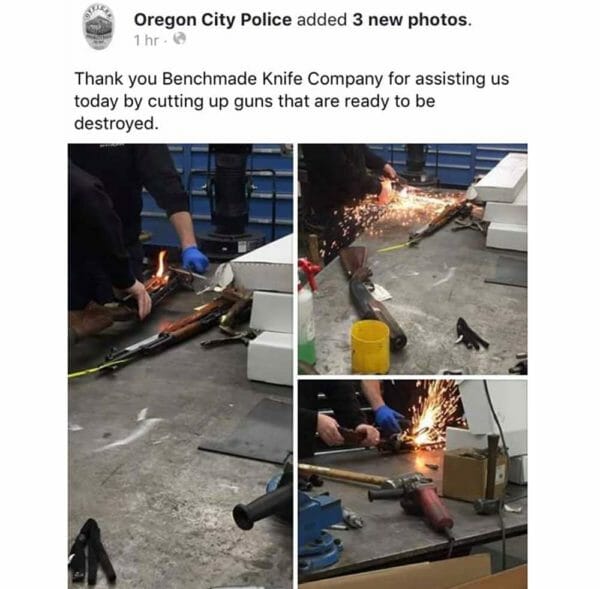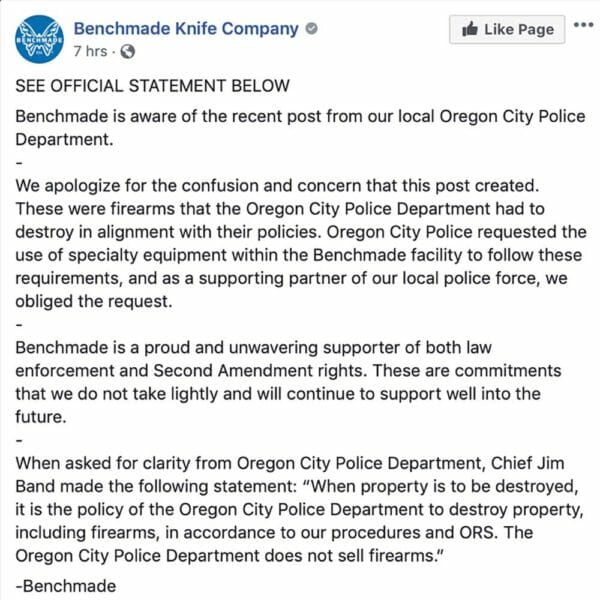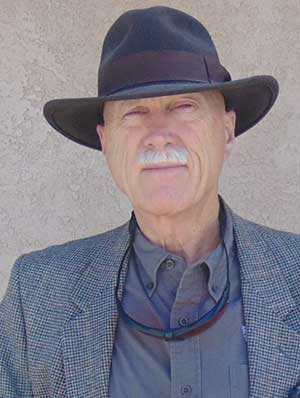
U.S.A. -(Ammoland.com)- -Second Amendment supporters on the Internet are incensed about Benchmade Knives helping their local police department, the Oregon City P.D., destroy guns the department had in their custody.
The Oregon City Police Department posted an image on their Facebook page, showing the Police Department destroying guns with Benchmade equipment.
The image was reposted on the Benchmade page, to show that Benchmade was helping the local police. This created the impression that Benchmade approved of the needless destruction of firearms.
When Benchmade started to receive criticism from Second Amendment supporters, they posted this statement from the police:

The Oregon City PD Chief, Jim Band, and the City Mayor have since issued a more detailed statement.

In the second statement, the Police Chief and Mayor imply they have no choice but to destroy the firearms in their custody.
They never mention laws requiring the destruction of the guns turned in to them. They mention judges orders, which police are obligated to follow. But judges do not have authority to destroy guns that are not part of a crime adjudicated by the judge.
A clear policy is mentioned in the first statement Benchmade attributes to the PD:
“The Oregon City Police Department does not sell firearms.”
Most police departments in the United States do sell firearms. Several states have required police departments to do so, by law. Arizona is one of them. Does Oregon City P.D. destroy their duty firearms when they transfer to a new model? Oregon City has 44 sworn officers.
The reasons most police departments sell guns are clear:
Guns are valuable property. It is poor stewardship of the public trust to destroy valuable property without good reason. Destroying guns does not reduce the number of guns in circulation. It increases the sale of new guns. It does nothing to reduce demand. It only reduces the supply of used guns. It costs money and time.
There are numerous companies that will take used guns off the police chief’s hands and write a check in return.
If the guns *must* be destroyed, there are several companies who will legally destroy the receivers and sell the remainder for parts.
Again, they would write a check to the police department. The company does the destruction and provides proof of the destruction. The police do not have to spend money to do so or ask Benchmade for equipment to do so.
The destruction of guns is a political statement. It sends the message “Guns are bad.” That is what angers Second Amendment supporters. The police and city, and by implication Benchmade, are seen to be choosing sides in the struggle to restore the Second Amendment. They are seen to be choosing the wrong side.
What is the point of a police department destroying guns themselves and not selling the parts? What advantage exists, except to send a statement that guns are bad?
Before we assume the motives of the Chief Band and the Mayor, we should determine if some guns are sold (or traded, or exchanged).
If the destruction is highly selective, Second Amendment supporters will be willing to be nuanced in their response.
I reached out to Captain Shaun Davis of the Oregon City PD for answers to these questions. A phone transfer sent me to his voice mail. A reply has not be received by the time this article was submitted.
About Dean Weingarten:
Dean Weingarten has been a peace officer, a military officer, was on the University of Wisconsin Pistol Team for four years, and was first certified to teach firearms safety in 1973. He taught the Arizona concealed carry course for fifteen years until the goal of constitutional carry was attained. He has degrees in meteorology and mining engineering, and recently retired from the Department of Defense after a 30 year career in Army Research, Development, Testing, and Evaluation.
